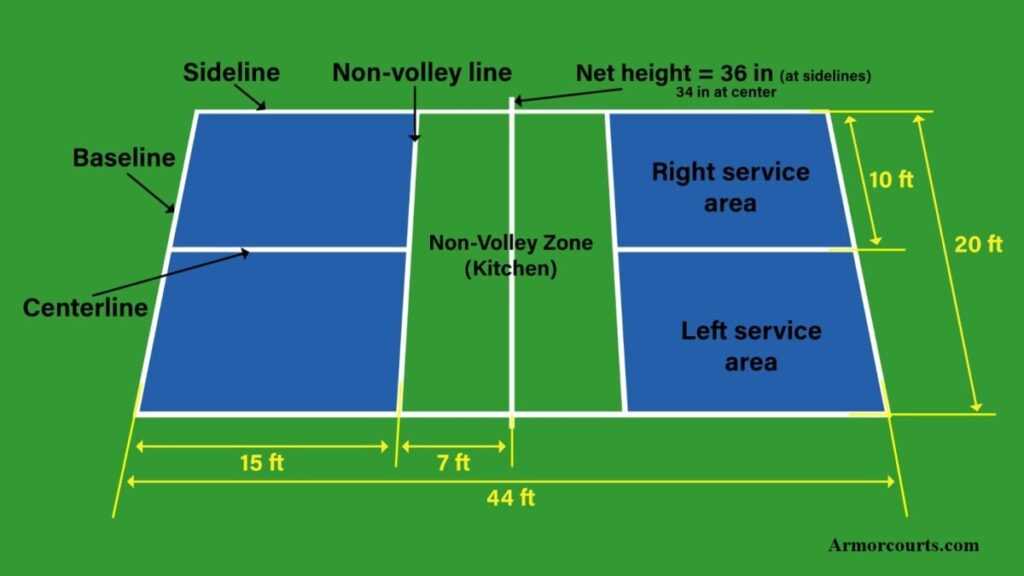Interior and Outdoor Pickleball Court Construction Providers
Interior and Outdoor Pickleball Court Construction Providers
Blog Article
Sustainable Practices in Pickleball Court Building You Need To Know
As the popularity of pickleball remains to increase, so too does the demand for sustainable practices in court building. This technique not only addresses environmental problems but also enhances the durability and capability of the courts. From choosing green materials to applying efficient drain and energy-saving lights services, there are countless techniques to take into consideration. Yet, the effect of these practices expands much past the court itself. Recognizing exactly how each aspect adds to a much more sustainable future welcomes further exploration into the intricate equilibrium between leisure development and environmental stewardship.
Selecting Eco-Friendly Materials
Selecting environment-friendly products is a vital action in the building and construction of sustainable pickleball courts. The choice of sustainable products not only decreases ecological influence yet also enhances the long life and efficiency of the court. Trick materials consist of recycled rubber for the surface, which supplies exceptional longevity and shock absorption while drawing away waste from landfills.
Furthermore, making use of in your area sourced materials reduces transport exhausts and sustains local economic climates. Pickleball court construction. Utilizing indigenous woods for fencing and seating can provide a sustainable visual while ensuring resilience versus the components.
Integrating permeable products for court structures can additionally contribute to sustainability by permitting all-natural water drain and reducing drainage. These selections not only secure neighborhood ecological communities however additionally promote much healthier play environments.
Effective Drain Solutions
While the choice of eco-friendly materials is crucial, implementing effective drain options is equally critical for maintaining sustainable pickleball courts. Appropriate drain not just protects the court surface from water damages but also reduces erosion and runoff, advertising ecological integrity.
Reliable water drainage systems can consist of permeable paving, which allows water to penetrate the ground instead of merging on the surface area. This lowers the likelihood of standing water, which can bring about mold and various other upkeep issues. In addition, integrating tactically placed drain channels and swales can direct excess water far from the court location, making certain a dry having fun surface and avoiding dirt erosion.
Utilizing indigenous plant life in the landscape design around the courts can even more boost drain by absorbing excess water and minimizing drainage. These plants need less watering and advertise biodiversity, lining up with sustainable techniques.
Moreover, it is important to on a regular basis keep the drainage system to ensure its long-lasting efficiency. This includes clearing up debris and tracking for clogs. By focusing on efficient drainage services, pickleball court manufacturers can considerably add to the sustainability and long life of the facility, ultimately benefiting both players and the atmosphere.
Energy-Efficient Illumination Options
As the need for pickleball remains to expand, incorporating energy-efficient lights options into court design has become significantly important for sustainability. Traditional illumination systems commonly take in too much power, adding to greater functional expenses and environmental impact. Adopting modern-day, energy-efficient technologies is essential for both brand-new building and constructions and remodellings.
LED (Light Emitting Diode) lighting sticks out as a leading option due to its long life and energy financial savings (Pickleball court construction). Compared to standard lights, LEDs utilize about 75% less energy and can last up to 25 times much longer, considerably lowering upkeep costs. The directional nature of LED illumination reduces light air pollution, guaranteeing that lighting is concentrated on the court instead than bordering locations.

Sustainable Surface Alternatives
Discovering lasting surface area alternatives for pickleball courts has actually obtained traction among players and contractors alike. The emphasis on eco-friendly materials not only aligns with the growing ecological understanding however additionally enhances the performance and toughness of the courts.
One popular option is the use of recycled rubber, which can be sourced from made use of tires. This product offers outstanding shock absorption, minimizing the click to read threat of injuries for players while advertising sustainability. Furthermore, modular tiles made from recycled plastics offer another feasible option. These tiles are simple to set up and replace, and their versatility permits different court configurations.
Natural grass courts are also emerging as a lasting selection, advertising biodiversity and decreasing the warm island impact. Nonetheless, they need normal upkeep and water, which might not straighten with all sustainability objectives.

Water Preservation Methods

An additional effective method entails the setup of rain harvesting systems. These systems accumulate and keep rainwater for usage in preserving court surface areas and landscaping. This approach not just saves potable water however additionally reduces reliance on metropolitan resources.
Furthermore, using drought-resistant landscaping around the courts is important. Native plants need much less water and are much better adapted try this to local climate conditions, hence decreasing general water usage. In addition, utilizing reliable watering systems, such as drip watering, ensures that water is provided directly to plant roots, lessening evaporation and waste.
Final Thought
Including sustainable practices in pickleball court building significantly contributes to ecological preservation and source efficiency. By prioritizing these methods, the construction of pickleball courts can line up with more comprehensive ecological objectives while advertising long life and functionality within communities.
As the popularity of pickleball proceeds to climb, so too does the need for sustainable methods in court building.Choosing environmentally friendly materials is a crucial step in the building and construction of sustainable pickleball courts. By prioritizing energy-efficient illumination choices, pickleball court erectors can contribute to a more sustainable future while fulfilling the demands of players and stakeholders alike.Including sustainable surface choices not just enhances the efficiency of pickleball courts yet also leads the means for executing effective water preservation methods.Incorporating lasting methods in pickleball court building and construction significantly adds to environmental conservation and resource efficiency.
Report this page